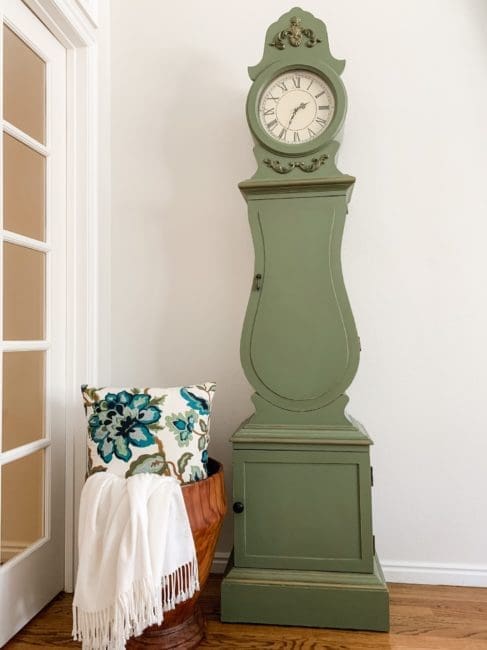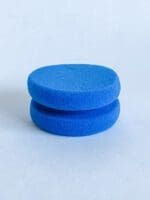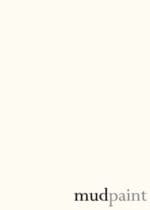Estimated reading time: 4 minutes
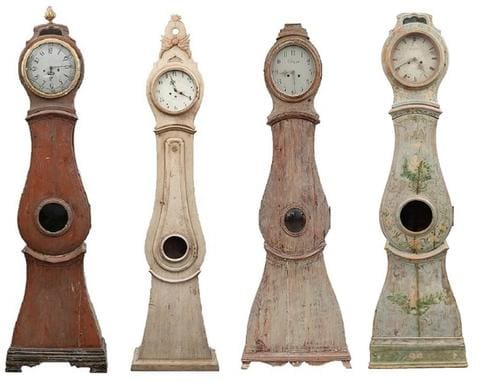
Swedish Mora clocks were produced in the late 18th century and were made through the end of the 19th century. Because of their age and specific location where they originated, they are very rare to find and can be quite expensive. Enter mass produced/knock-off reproductions of Mora clocks! These are much more reasonably priced, but the look and feel doesn’t always match up to the original.
In other posts, we have discussed how to paint smaller, wall clocks, but, for this project our client had one of these reproductions in a bold red color with a floral pattern and gold trim. They were moving to a new home and the bright red of the clock wasn’t going to work for them.
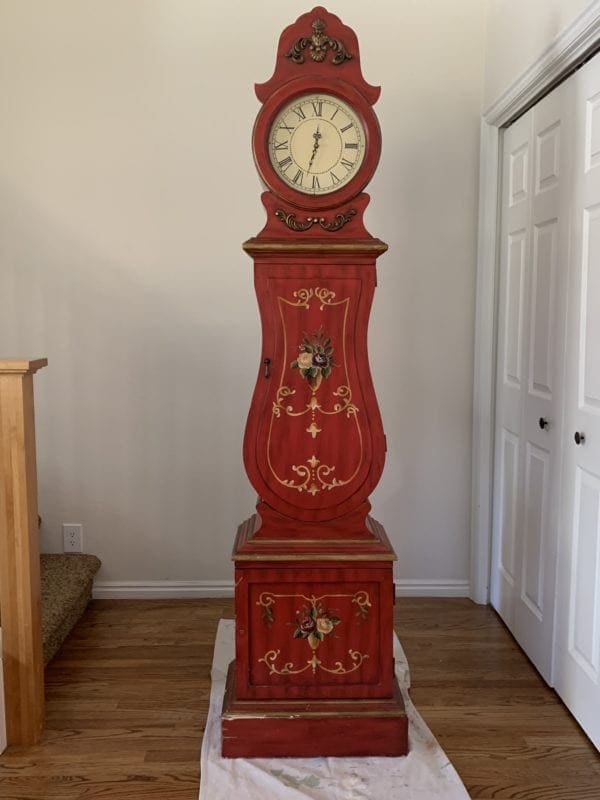
They wanted their clock to have more of the look and feel of an authentic Swedish Mora clock. They decided on painting it a mossy Swedish green color. We couldn’t quite find the right color in our MudPaint color family, so we decided to blend a couple of colors to get it just right.
To achieve the mossy/olive green color we were looking for we blended Grassy Green and Pebble in nearly equal amounts – a little more Grassy Green than Pebble. We decided to call it “Swedish Moss” for the project!
Once we had the color nailed down, we got to work! First step was to clean the piece and do a decent sanding on it. (For a great sanding option, check out our RAD Pad Sanding product!) The clock was not made of real wood, rather a press-board/composite material. So, when sanding we needed to be careful that we didn’t take off too much. Once sanded, we used some wood patch for minor repairs in a few areas and let that dry. Once dry, we lightly sanded those areas to get a smooth surface. Then, we wiped it down again to rid the surface of sanding dust. Next we needed to tape off the clock face. Using Frog Tape (our favorite), we taped off the glass on the clock to keep it protected from any random paint drips and brush strokes.
Then, it was priming time! MudPaint doesn’t always require a primer – which is one of the great things about it – but, for this piece we decided to prime. We wanted the surface to be as uniform and even as possible and covering the gold and other painted details was an important step. We used Zinsser 1-2-3 (always use a water-based primer when painting with MudPaint) for the priming coats.
After the primer was completely dry, we began to paint with the custom blend – “Swedish Moss”. We chose to use our natural 1” bristle brush for most of this piece; for the angles we pulled out the Zibra Palm Pro cut-in.
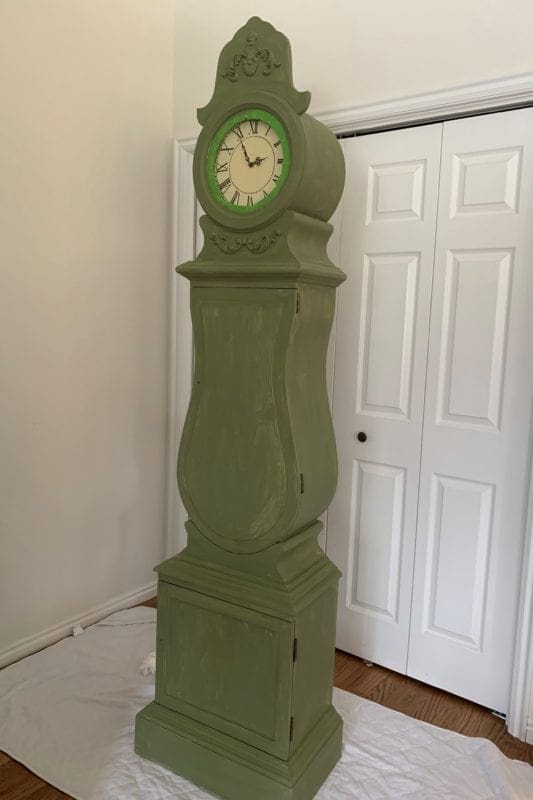
For best results with MudPaint, a little goes a long way – i.e., don’t put it on too thick. We painted two coats of “Swedish Moss”. Once dried, we used some gold metallic craft paint mixed with just a teeny, tiny bit of Just Black for the gold trim. We didn’t want too much gold, but basing it off of some photos of authentic Swedish Mora clocks, we knew we wanted to incorporate just a little of that detail. After the clock was painted and completely dry, we did just a little distressing in key areas to give the clock a dated and aged look. And, to finish it off, we applied two coats of our magical Matte Protective Clear Coat.

This knock-off Swedish Mora clock is now ready for a new chapter and is looking more like the original, authentic Swedish Mora clocks than it did before!

